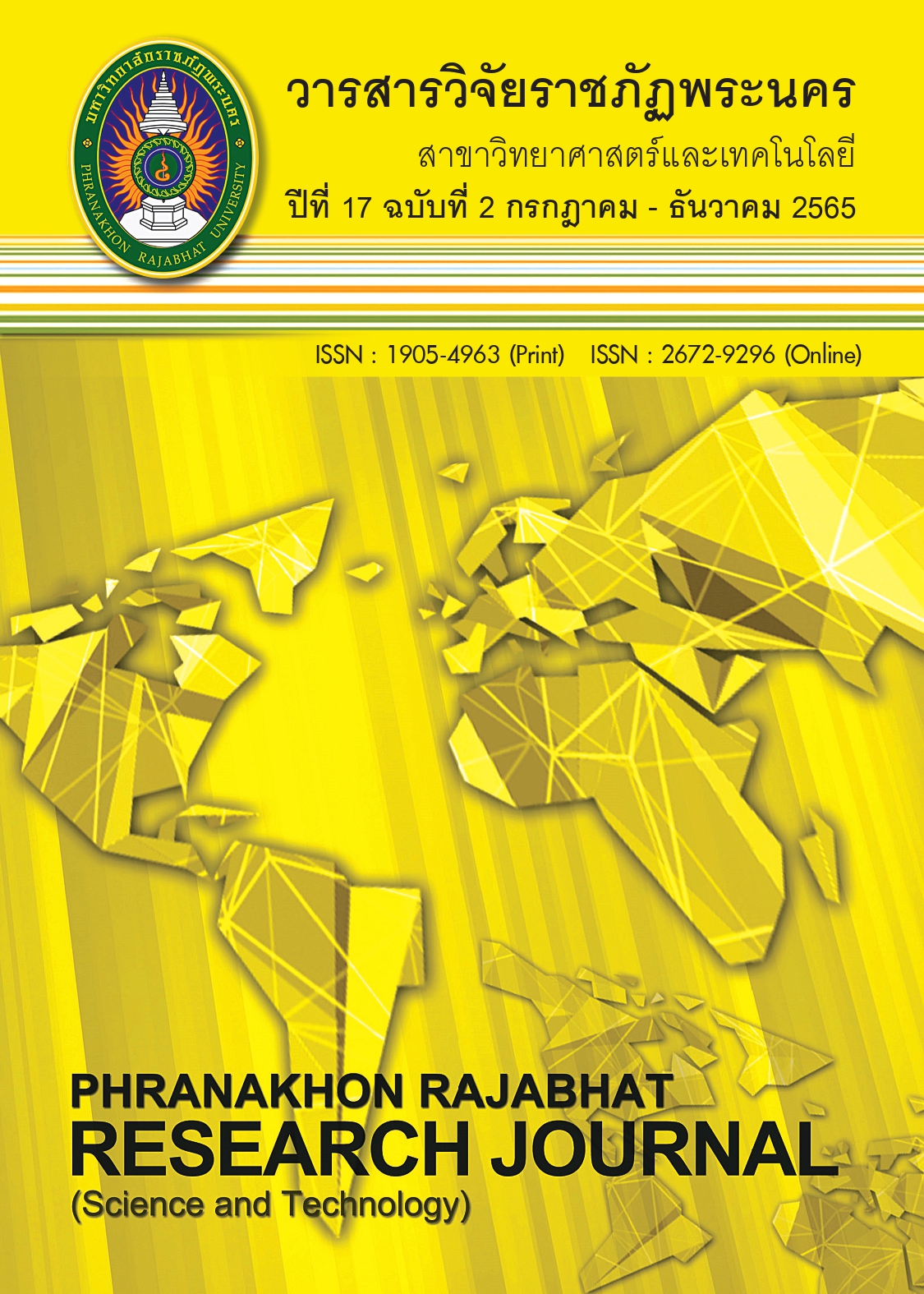HYPERBRANCHED POLY (L-LACTIDE) BY USING POLYGLYCIDOL FOR GREEN ENVIRONMENT
Keywords:
Branch structure, Blended Polylactide, Polylactide; PolyglycidolAbstract
Hyperbranched poly(L-lactide)(hb-PLLA)s for green environment were synthesized by ring-opening polymerization of L-lactide (LLA) using polyglycidol (PG) as an initiator. hb-PLLAs were blended with linear PLLA (l-PLLA) by varying the LLA branch content. Thermal, Mechanical and rheological properties, and optical transparency of hb-PLLAs and their blends with l-PLLA were investigated. All l-PLLA/hb-PLLAs blends showed slightly changes of Tg values, whereas the Tm was significantly unchanged. A single Tgis was observed in all blends, indicating a completely miscible system. All blends exhibited an increase in crystallinity, as the branch structure acted as nucleating agent for crystallization of l-PLLA. Viscosity of the blends was decreased with the addition of l-PLLA. This provides easy processing conditions. The blends also showed high optical transparency, comparable to neat l-PLLA. Given these properties and their biocompatibility, the blends can be used in biomedical applications.
References
Ajioka, M., Enomoto, K., Suzuki, K., & Yamaguchi, A. (1995). Basic properties of polylactic acid produced
by the direct condensation polymerization of lactic acid. Bulletin of the Chemical Society
of Japan, 68(8), 2125-2131.
Atkinson, J. L., & Vyazovkin, S. (2012). Thermal Properties and Degradation Behavior of Linear and
Branched Poly (L‐lactide) s and Poly (L‐lactide‐co‐glycolide) s. Macromolecular Chemistry
and Physics, 213(9), 924-936.
Cabral, H., Miyata, K., Osada, K., & Kataoka, K. (2018). Block copolymer micelles in nanomedicine
applications. Chemical reviews, 118(14), 6844-6892.
Cai, Q., Zhao, Y., Bei, J., Xi, F., & Wang, S. (2003). Synthesis and properties of star-shaped polylactide
attached to poly (amidoamine) dendrimer. Biomacromolecules, 4(3), 828-834.
Choi, Y. K., Bae, Y. H., & Kim, S. W. (1998). Star-shaped poly (ether− ester) block copolymers: synthesis,
characterization, and their physical properties. Macromolecules, 31(25), 8766-8774.
Fan, Y., Nishida, H., Shirai, Y., Tokiwa, Y., & Endo, T. (2004). Thermal degradation behaviour of poly
(lactic acid) stereocomplex. polymer Degradation and Stability, 86(2), 197-208.
Kainthan, R. K., Janzen, J., Levin, E., Devine, D. V., & Brooks, D. E. (2006). Biocompatibility testing of
branched and linear polyglycidol. Biomacromolecules, 7(3), 703-709.
Michalski, A., Brzezinski, M., Lapienis, G., & Biela, T. (2019). Star-shaped and branched polylactides:
Synthesis, characterization, and properties. Progress in Polymer Science, 89, 159-212.
Ormiston, J. A., & Serruys, P. W. (2009). Bioabsorbable coronary stents. Circulation: Cardiovascular
Interventions, 2(3), 255-260.
Ouchi, T., Ichimura, S., & Ohya, Y. (2006). Synthesis of branched poly (lactide) using polyglycidol and
thermal, mechanical properties of its solution-cast film. Polymer, 47(1), 429-434.
Petchsuk, A., Buchathip, S., Supmak, W., Opaprakasit, M., & Opaprakasit, P. (2014). Preparation and
properties of multi-branched poly(D-lactide) derived from polyglycidol and its stereocomplex
blends. Express Polymer Letters, 8(10), 779-789.
Phuphuak, Y., & Chirachanchai, S. (2013). Simple preparation of multi-branched poly (l-lactic acid)
and its role as nucleating agent for poly (lactic acid). Polymer, 54(2), 572-582.
Pistel, K. F., Bittner, B., Koll, H., Winter, G., & Kissel, T. (1999). Biodegradable recombinant human
erythropoietin loaded microspheres prepared from linear and star-branched block
copolymers: Influence of encapsulation technique and polymer composition on particle
characteristics. Journal of Controlled release, 59(3), 309-325.
Rasal, R. M., Janorkar, A. V., & Hirt, D. E. (2010). Poly (lactic acid) modifications. Progress in polymer
science, 35(3), 338-356.
Rosli, N. A., Karamanlioglu, M., Kargarzadeh, H., & Ahmad, I. (2021). Comprehensive exploration of
natural degradation of poly (lactic acid) blends in various degradation media: A review.
International journal of biological macromolecules.
Salaam, L. E., Dean, D., & Bray, T. L. (2006). In vitro degradation behavior of biodegradable 4-star
micelles. Polymer, 47(1), 310-318.
Shibata, M., Inoue, Y., & Miyoshi, M. (2006). Mechanical properties, morphology, and crystallization
behavior of blends of poly (L-lactide) with poly (butylene succinate-co-L-lactate) and poly
(butylene succinate). Polymer, 47(10), 3557-3564.
Tuominen, J., Kylmä, J., Kapanen, A., Venelampi, O., Itävaara, M., & Seppälä, J. (2002). Biodegradation
of lactic acid based polymers under controlled composting conditions and evaluation of
the ecotoxicological impact. Biomacromolecules, 3(3), 445-455.
Uurto, I., Mikkonen, J., Parkkinen, J., Keski-Nisula, L., Nevalainen, T., Kellomäki, M., ... & Salenius, J. P.
(2005). Drug-eluting biodegradable poly-D/L-lactic acid vascular stents: an experimental
pilot study. Journal of Endovascular Therapy, 12(3), 371-379.
Xu, X., Lu, H., Luo, G., Kang, X., & Luo, Y. (2021). Theoretical insight into the opposite redox activity of
iron complexes toward the ring opening polymerization of lactide and epoxide. Inorganic
Chemistry Frontiers, 8(4), 1005-1014.
Downloads
Published
Issue
Section
License

This work is licensed under a Creative Commons Attribution-NonCommercial-NoDerivatives 4.0 International License.
โปรดกรอกเอกสารและลงนาม "หนังสือรับรองให้ตีพิมพ์บทความในวารสารวิจัยมหาวิทยาลัยราชภัฏพระนคร สาขาวิทยาศาสตร์และเทคโนโลยี" ก่อนการตีพิมพ์




